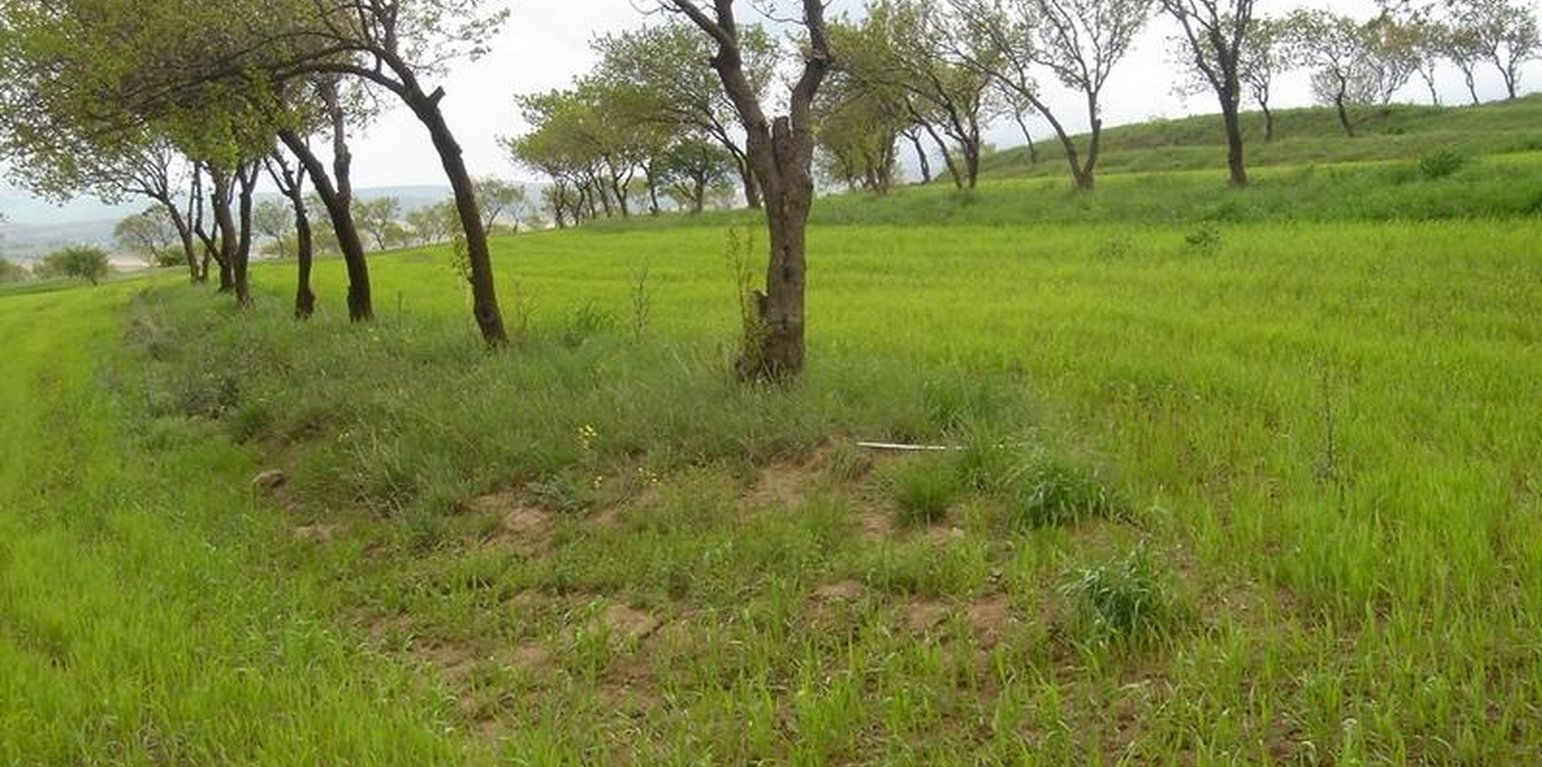Orchard-based Agroforestry (intercropping)
(Tadjikistan)
Description
Intercropping of wheat in an existing orchard that was established during the Soviet period.
The technology involves intercropping wheat in an existing apricot orchard, that was established during soviet times to increase farm production, by integrating different resources in an environment protected from soil erosion. The intercropped area is ploughed by tractor. In general, farmers do not practice crop rotation since they usually allocate cereal production to the most fertile field plots of their farm.
Along the trees aligned on contour, a three metre wide grass strip is left uncultivated to control runoff, and to protect the ground from splash erosion. Spacing between rows is 13 metres, which allows unhindered farm operations.
Most orchards in Faizabad Rayon were established during Soviet times. Tree rows were planted close together in order to obtain maximum yields from the orchard monoculture systems. Some of the tree rows were removed, allowing more space for intercropping.
Purpose of the Technology: The technology is applied in existing orchards which generally range between 10-25% in gradient. In existing orchards, intercropping alone is relatively cost intensive. Harvesting two crops at a time increases overall farm production and improves food security since harvests of intercropped food crops are found to be more reliable than those on exposed annual cropland. However, many orchards are still owned by state farms which usually do not practice intercropping. Since management of fruit trees require considerable labour and material inputs (e.g. chemicals for pest/disease control as well as fertilisers) which often cannot be met by farmers, yields of fruit trees have declined after the privatisation of these areas. Furthermore, farmers often lack knowledge of appropriate orchard management techniques and miss opportunities to gradually replace old trees by new seedlings.
Lieu
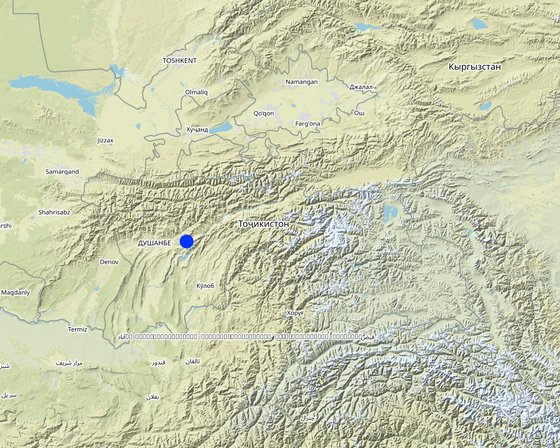
Lieu: Faizabad Rayon, Tajikistan, Tadjikistan
Nbr de sites de la Technologie analysés:
Géo-référence des sites sélectionnés
Diffusion de la Technologie: répartie uniformément sur une zone (approx. 1-10 km2)
Dans des zones protégées en permanence ?:
Date de mise en oeuvre:
Type d'introduction
-
grâce à l'innovation d'exploitants des terres
-
dans le cadre d'un système traditionnel (> 50 ans)
-
au cours d'expérimentations / de recherches
-
par le biais de projets/ d'interventions extérieures
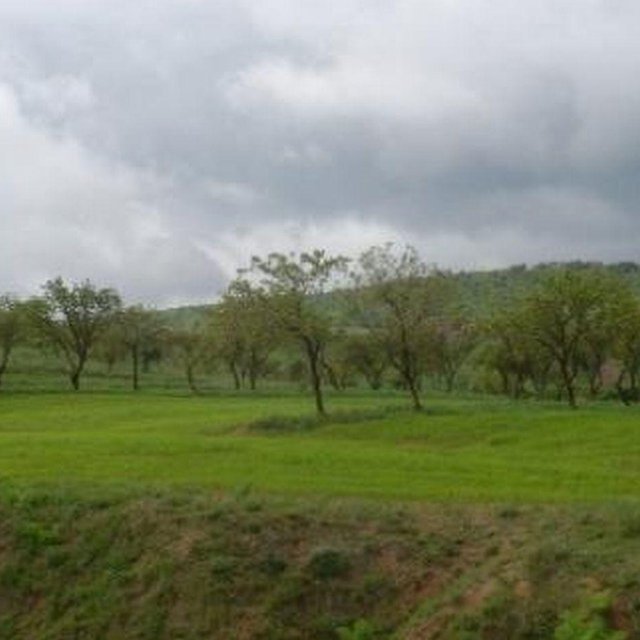
Overview of SWC field (Erik Bühlmann (Berne, Switzerland))
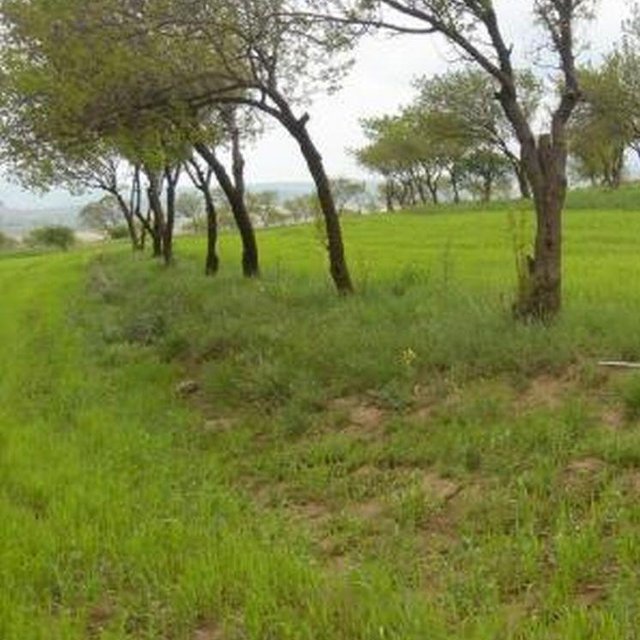
Intercropping of wheat in an existing apricot orchard (Erik Bühlmann (Berne, Switzerland))
Classification de la Technologie
Principal objectif
-
améliorer la production
-
réduire, prévenir, restaurer les terres dégradées
-
préserver l'écosystème
-
protéger un bassin versant/ des zones situées en aval - en combinaison avec d'autres technologies
-
conserver/ améliorer la biodiversité
-
réduire les risques de catastrophes
-
s'adapter au changement et aux extrêmes climatiques et à leurs impacts
-
atténuer le changement climatique et ses impacts
-
créer un impact économique positif
-
créer un impact social positif
L'utilisation des terres
Les divers types d'utilisation des terres au sein du même unité de terrain: Oui - Agroforesterie
-
Terres cultivées
- Cultures annuelles: légumineuses et légumes secs - pois, cultures de plantes à fibres - lin, chanvre, autres, céréales - blé de printemps, cultures fourragères - autres, cultures fourragères - luzerne, esparzet
- Cultures pérennes (non ligneuses)
- Plantations d’arbres ou de buissons: fruits, autres, fruits à noyaux (pêche, abricot, cerise, prune)
Est-ce que les cultures intercalaires sont pratiquées? Oui
Approvisionnement en eau
-
pluvial
-
mixte: pluvial-irrigué
-
pleine irrigation
But relatif à la dégradation des terres
-
prévenir la dégradation des terres
-
réduire la dégradation des terres
-
restaurer/ réhabiliter des terres sévèrement dégradées
-
s'adapter à la dégradation des terres
-
non applicable
Dégradation des terres traité
-
érosion hydrique des sols - Wt: perte de la couche superficielle des sols (couche arable)/ érosion de surface, Wg: ravinement/ érosion en ravines
-
dégradation chimique des sols - Cn: baisse de la fertilité des sols et réduction du niveau de matière organique (non causée par l’érosion)
Mesures de GDT
-
pratiques agronomiques - A1: Couverture végétale/ du sol, A7: Autres
-
pratiques végétales - V5: Autres
-
modes de gestion - M1: Changement du type d’utilisation des terres
Dessin technique
Spécifications techniques
Intercropping of wheat between apricot trees aligned on contour
Location: Chinoro. Faizabad Rayon, RRS
Technical knowledge required for field staff / advisors: moderate
Technical knowledge required for land users: moderate
Main technical functions: control of dispersed runoff: impede / retard, control of concentrated runoff: impede / retard, reduction of slope length
Secondary technical functions: increase in nutrient availability (supply, recycling,…), increase of infiltration, increase / maintain water stored in soil, reduction in wind speed, increase in soil fertility
Mixed cropping / intercropping
Material/ species: winter wheat
Quantity/ density: 150kg/ha
Remarks: intercropping between tree rows
Mineral (inorganic) fertilizers
Material/ species: superphosphate, silitra
Quantity/ density: 200kg
Remarks: only for intercropped wheat
Contour tillage
Remarks: between tree rows
Aligned: -contour
Vegetative material: F : fruit trees / shrubs
Number of plants per (ha): 200
Vertical interval between rows / strips / blocks (m): 2
Spacing between rows / strips / blocks (m): 13
Vertical interval within rows / strips / blocks (m): 4
Vegetative measure: aligned: contour
Vegetative material: G : grass
Vertical interval between rows / strips / blocks (m): 2
Spacing between rows / strips / blocks (m): 10
Width within rows / strips / blocks (m): 3
Vegetative measure: Vegetative material: G : grass
Vegetative measure: Vegetative material: G : grass
Vegetative measure: Vegetative material: G : grass
Fruit trees / shrubs species: apricot trees
Slope (which determines the spacing indicated above): 18.00%
Gradient along the rows / strips: 0.00%
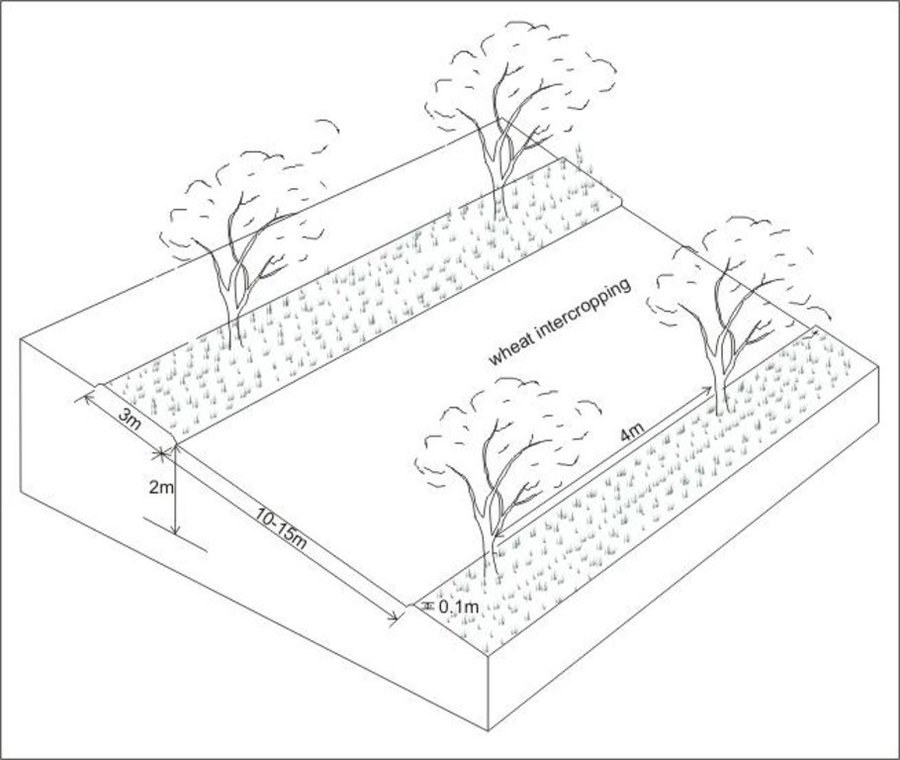
Author: Erik Bühlmann, Berne, Switzerland
Mise en œuvre et entretien : activités, intrants et coûts
Calcul des intrants et des coûts
- Les coûts sont calculés :
- Monnaie utilisée pour le calcul des coûts : dollars américains
- Taux de change (en dollars américains - USD) : 1 USD = n.d.
- Coût salarial moyen de la main-d'oeuvre par jour : 3.00
Facteurs les plus importants affectant les coûts
The number of trees influences costs considerably, since orchard management is labour and input intensive
Activités de mise en place/ d'établissement
-
establishment of apricot orchard by state enterprise (Calendrier/ fréquence: established in 1989)
-
acquiring land use rights for existing orchard lands from local authorities (Calendrier/ fréquence: None)
-
thinning and clearing of tree rows (Calendrier/ fréquence: None)
Intrants et coûts de mise en place
| Spécifiez les intrants |
Unité |
Quantité |
Coûts par unité (dollars américains) |
Coût total par intrant (dollars américains) |
% des coût supporté par les exploitants des terres |
|
Main d'œuvre
|
| thinning and clearing of tree rows |
ha |
1,0 |
6,0 |
6,0 |
100,0 |
|
Equipements
|
| tools |
ha |
1,0 |
25,0 |
25,0 |
100,0 |
| Coût total de mise en place de la Technologie |
31.0 |
|
| Coût total de mise en place de la Technologie en dollars américains (USD) |
31.0 |
|
Activités récurrentes d'entretien
-
disc ploughing (area for intercropping) (Calendrier/ fréquence: before sowing / annual)
-
sowing (winter wheat) (Calendrier/ fréquence: None)
-
applying of fertiliser (Calendrier/ fréquence: early spring / each cropping season)
-
harvesting (Calendrier/ fréquence: summer / each cropping season)
-
pruning of fruit trees (Calendrier/ fréquence: autumn/winter /annual)
-
cutting of grass strip (Calendrier/ fréquence: summer /annual)
-
applying manure for fruit trees (Calendrier/ fréquence: winter/early spring /annual)
-
removal of twiggs affected by insects/deseases (Calendrier/ fréquence: spring /weekly)
Intrants et coûts de l'entretien
| Spécifiez les intrants |
Unité |
Quantité |
Coûts par unité (dollars américains) |
Coût total par intrant (dollars américains) |
% des coût supporté par les exploitants des terres |
|
Main d'œuvre
|
| sowing and weeding |
ha |
1,0 |
18,0 |
18,0 |
100,0 |
| pruning of fruit trees |
ha |
1,0 |
45,0 |
45,0 |
100,0 |
| cutting of twiggs affe |
ha |
1,0 |
15,0 |
15,0 |
100,0 |
|
Equipements
|
| machine use |
ha |
1,0 |
20,0 |
20,0 |
100,0 |
|
Matériel végétal
|
| seeds |
ha |
1,0 |
30,0 |
30,0 |
100,0 |
|
Engrais et biocides
|
| fertilizer |
ha |
1,0 |
50,0 |
50,0 |
100,0 |
| compost/manure |
ha |
1,0 |
40,0 |
40,0 |
100,0 |
| Coût total d'entretien de la Technologie |
218.0 |
|
| Coût total d'entretien de la Technologie en dollars américains (USD) |
218.0 |
|
Environnement naturel
Précipitations annuelles
-
< 250 mm
-
251-500 mm
-
501-750 mm
-
751-1000 mm
-
1001-1500 mm
-
1501-2000 mm
-
2001-3000 mm
-
3001-4000 mm
-
> 4000 mm
Zones agro-climatiques
-
humide
-
subhumide
-
semi-aride
-
aride
Spécifications sur le climat
growing period between 180-210 days
Pentes moyennes
-
plat (0-2 %)
-
faible (3-5%)
-
modéré (6-10%)
-
onduleux (11-15%)
-
vallonné (16-30%)
-
raide (31-60%)
-
très raide (>60%)
Reliefs
-
plateaux/ plaines
-
crêtes
-
flancs/ pentes de montagne
-
flancs/ pentes de colline
-
piémonts/ glacis (bas de pente)
-
fonds de vallée/bas-fonds
Zones altitudinales
-
0-100 m
-
101-500 m
-
501-1000 m
-
1001-1500 m
-
1501-2000 m
-
2001-2500 m
-
2501-3000 m
-
3001-4000 m
-
> 4000 m
La Technologie est appliquée dans
-
situations convexes
-
situations concaves
-
non pertinent
Profondeurs moyennes du sol
-
très superficiel (0-20 cm)
-
superficiel (21-50 cm)
-
modérément profond (51-80 cm)
-
profond (81-120 cm)
-
très profond (>120 cm)
Textures du sol (de la couche arable)
-
grossier/ léger (sablonneux)
-
moyen (limoneux)
-
fin/ lourd (argile)
Textures du sol (> 20 cm sous la surface)
-
grossier/ léger (sablonneux)
-
moyen (limoneux)
-
fin/ lourd (argile)
Matière organique de la couche arable
-
abondant (>3%)
-
moyen (1-3%)
-
faible (<1%)
Profondeur estimée de l’eau dans le sol
-
en surface
-
< 5 m
-
5-50 m
-
> 50 m
Disponibilité de l’eau de surface
-
excès
-
bonne
-
moyenne
-
faible/ absente
Qualité de l’eau (non traitée)
-
eau potable
-
faiblement potable (traitement nécessaire)
-
uniquement pour usage agricole (irrigation)
-
eau inutilisable
La salinité de l'eau est-elle un problème ?
Présence d'inondations
Caractéristiques des exploitants des terres appliquant la Technologie
Orientation du système de production
-
subsistance (auto-approvisionnement)
-
exploitation mixte (de subsistance/ commerciale)
-
commercial/ de marché
Revenus hors exploitation
-
moins de 10% de tous les revenus
-
10-50% de tous les revenus
-
> 50% de tous les revenus
Niveau relatif de richesse
-
très pauvre
-
pauvre
-
moyen
-
riche
-
très riche
Niveau de mécanisation
-
travail manuel
-
traction animale
-
mécanisé/ motorisé
Sédentaire ou nomade
-
Sédentaire
-
Semi-nomade
-
Nomade
Individus ou groupes
-
individu/ ménage
-
groupe/ communauté
-
coopérative
-
employé (entreprise, gouvernement)
Âge
-
enfants
-
jeunes
-
personnes d'âge moyen
-
personnes âgées
Superficie utilisée par ménage
-
< 0,5 ha
-
0,5-1 ha
-
1-2 ha
-
2-5 ha
-
5-15 ha
-
15-50 ha
-
50-100 ha
-
100-500 ha
-
500-1 000 ha
-
1 000-10 000 ha
-
> 10 000 ha
Échelle
-
petite dimension
-
moyenne dimension
-
grande dimension
Propriété foncière
-
état
-
entreprise
-
communauté/ village
-
groupe
-
individu, sans titre de propriété
-
individu, avec titre de propriété
Droits d’utilisation des terres
-
accès libre (non organisé)
-
communautaire (organisé)
-
loué
-
individuel
Droits d’utilisation de l’eau
-
accès libre (non organisé)
-
communautaire (organisé)
-
loué
-
individuel
Accès aux services et aux infrastructures
Impact
Impacts socio-économiques
Production agricole
en baisse
en augmentation
gestion des terres
due to intercropping, management of trees gets more difficult
dépenses pour les intrants agricoles
en augmentation
en baisse
intercropped wheat requires additional inputs to an already input intensive orchard system
revenus agricoles
en baisse
en augmentation
fruit production
due to lack of fertilisers and pesticides
fruit yields
due to inappropriate pruning
Analyse coûts-bénéfices
Bénéfices par rapport aux coûts de mise en place
Rentabilité à court terme
très négative
très positive
Rentabilité à long terme
très négative
très positive
Bénéfices par rapport aux coûts d'entretien
Rentabilité à court terme
très négative
très positive
Rentabilité à long terme
très négative
très positive
Adoption et adaptation de la Technologie
Pourcentage d'exploitants des terres ayant adopté la Technologie dans la région
-
cas isolés/ expérimentaux
-
1-10%
-
11-50%
-
> 50%
Parmi tous ceux qui ont adopté la Technologie, combien d'entre eux l'ont fait spontanément, à savoir sans recevoir aucune incitation matérielle ou aucun paiement ?
-
0-10%
-
11-50%
-
51-90%
-
91-100%
Nombre de ménages et/ou superficie couverte
NA
La Technologie a-t-elle été récemment modifiée pour s'adapter à l'évolution des conditions ?
A quel changement ?
-
changements/ extrêmes climatiques
-
évolution des marchés
-
la disponibilité de la main-d'œuvre (par ex., en raison de migrations)
Conclusions et enseignements tirés
Points forts: point de vue de l'exploitant des terres
-
two harvests at a time
How can they be sustained / enhanced? increase in farm production
-
good wheat harvests in intercropping systems
Points forts: point de vue du compilateur ou d'une autre personne-ressource clé
-
low costs for establishment (intercropping only)
-
wheat production with very little soil erosion
-
intercropping can improve food security of low income families
Faiblesses/ inconvénients/ risques: point de vue de l'exploitant des terrescomment surmonter
-
yield of fruit trees insufficient because required inputs are not affordable
gradually replace old trees by new seedlings
-
Insufficient yields of intercropped plants because of shadow of old/large fruit trees
-
orchard systems vulnerable to pests, late frost and strong winds
Faiblesses/ inconvénients/ risques: point de vue du compilateur ou d'une autre personne-ressource clécomment surmonter
-
productive orchard systems require considerable amounts of recurrent inputs (e.g. chemicals for pest/disease control, fertiliser) which locals often cannot afford
avoiding intercropping of sparsely growing crops in vulnerable intercropping systems; improving ground cover by mulching
-
in comparison to orchards with an intact grass cover, intercropping of sparcely growing plant species increases the risk of soil erosion
-
intercropped wheat hinders maintenance activities of fruit trees
Références
Examinateur
-
David Streiff
-
Alexandra Gavilano
-
Joana Eichenberger
Date de mise en oeuvre: 8 mars 2011
Dernière mise à jour: 2 novembre 2021
Personnes-ressources
-
Erik Bühlmann - Spécialiste GDT
-
Bettina Wolfgramm - Spécialiste GDT
Description complète dans la base de données WOCAT
Données de GDT correspondantes
La documentation a été facilitée par
Institution
- CDE Centre for Development and Environment (CDE Centre for Development and Environment) - Suisse
- NCCR North-South (NCCR North-South) - Kirghizistan
Projet
- Pilot Program for Climate Resilience, Tajikistan (WB / PPCR)
